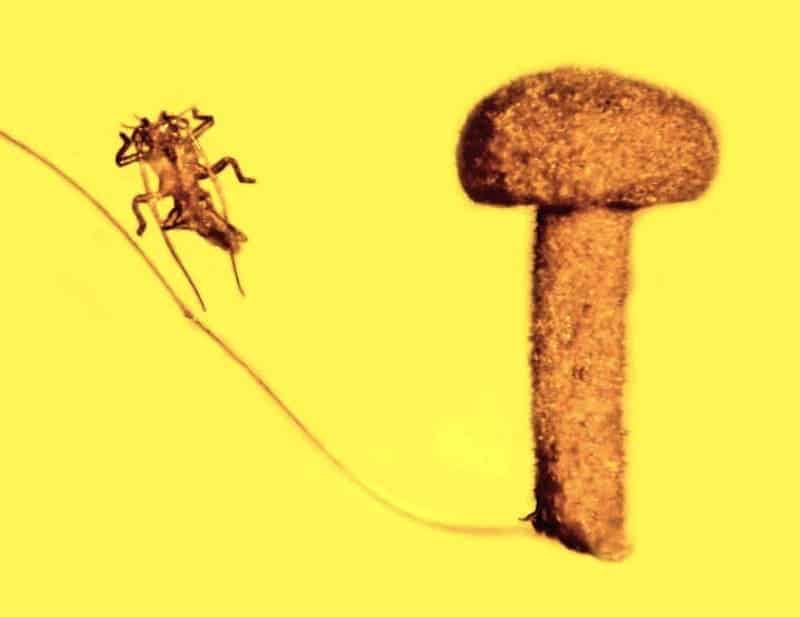
It’s not uncommon for insects, plants and various other life forms to become trapped in amber deposits, but a recent discovery reveals a bit of a different story – a fifty-million-year-old exoskeleton of an ancient insect that was literally scared out of its skin.
The Baltic amber was retrieved from the coast of the Baltic Sea in Scandinavia and comes from a time when dinosaurs had recently died out and mammals were increasing in their diversity.
In addition to holding an insect exoskeleton, which is comparable to a modern-day “walking stick,” the amber also contains the first mushroom ever discovered in Baltic amber and a piece of mammalian hair. Taken together, these three remnants paint a picture of an ancient encounter between an insect and a rodent.
“From what we can see in this fossil, a tiny mushroom was bitten off, probably by a rodent, at the base of a tree,” said George Poinar, Jr., a researcher in in the College of Science at Oregon State University and author of the study. “An insect, similar to a walking stick, was probably also trying to feed on the mushroom. It appears to have immediately jumped out of its skin and escaped, just as tree sap flowed over the remaining exoskeleton and a hair left behind by the fleeing rodent.”
The ancient insect exoskeleton preserved in the amber was revealed to be a member of the Phasmatodea order, which are also referred to as stick insects due to their resemblance to sticks and leaves.
“It would have shed its skin repeatedly before reaching adulthood, in a short lifespan of a couple months,” Poinar said. “In this case, the ability to quickly get out of its skin, along with being smart enough to see a problem coming, saved its life.”
The presence of fine filaments in the exoskeleton suggest that the skin was extremely fresh when it was engulfed by the amber, supporting the idea that the insect jumped out of its skin just in the knick of time.
Journal Reference: A gilled mushroom, Gerontomyces lepidotus gen. et sp. nov. (Basidiomycota: Agaricales), in Baltic amber. 22 June 2016. 10.1016/j.funbio.2016.06.008






